Animal
From Wikipedia, the free encyclopedia
For other uses, see Animal (disambiguation).
"Animalia" redirects here. For other uses, see Animalia (disambiguation).
| Animals Temporal range: Cryogenian – Recent 670–0Ma |
|
|---|---|
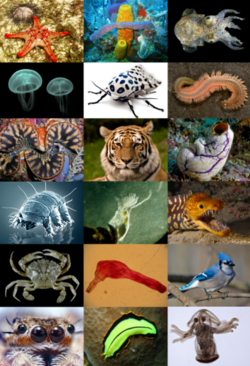 |
|
| Scientific classification | |
| Domain: | Eukaryota |
| (unranked) | Unikonta |
| (unranked) | Opisthokonta |
| (unranked) | Holozoa |
| (unranked) | Filozoa |
| Kingdom: | Animalia Linnaeus, 1758 |
| Phyla | |
|
|
| Synonyms | |
|
|
Most known animal phyla appeared in the fossil record as marine species during the Cambrian explosion, about 542 million years ago. Animals are divided into various sub-groups, some of which are: vertebrates (birds, mammals, amphibians, reptiles, fish); molluscs (clams, oysters, octopuses, squid, snails); arthropods (millipedes, centipedes, insects, spiders, scorpions, crabs, lobsters, shrimp); annelids (earthworms, leeches); sponges; and jellyfish.
Contents
Etymology
The word "animal" comes from the Latin word animalis, meaning "having breath".[1] In everyday non-scientific usage the word excludes humans – that is, "animal" is often used to refer only to non-human members of the kingdom Animalia; often, only closer relatives of humans such as mammals, or mammals and other vertebrates, are meant.[2] The biological definition of the word refers to all members of the kingdom Animalia, encompassing creatures as diverse as sponges, jellyfish, insects, and humans.[3]Characteristics
Animals have several characteristics that set them apart from other living things. Animals are eukaryotic and multicellular,[4] which separates them from bacteria and most protists. They are heterotrophic,[5] generally digesting food in an internal chamber, which separates them from plants and algae.[6] They are also distinguished from plants, algae, and fungi by lacking rigid cell walls.[7] All animals are motile,[8] if only at certain life stages. In most animals, embryos pass through a blastula stage,[9] which is a characteristic exclusive to animals.Structure
With a few exceptions, most notably the sponges (Phylum Porifera) and Placozoa, animals have bodies differentiated into separate tissues. These include muscles, which are able to contract and control locomotion, and nerve tissues, which send and process signals. Typically, there is also an internal digestive chamber, with one or two openings.[10] Animals with this sort of organization are called metazoans, or eumetazoans when the former is used for animals in general.[11]All animals have eukaryotic cells, surrounded by a characteristic extracellular matrix composed of collagen and elastic glycoproteins.[12] This may be calcified to form structures like shells, bones, and spicules.[13] During development, it forms a relatively flexible framework[14] upon which cells can move about and be reorganized, making complex structures possible. In contrast, other multicellular organisms, like plants and fungi, have cells held in place by cell walls, and so develop by progressive growth.[10] Also, unique to animal cells are the following intercellular junctions: tight junctions, gap junctions, and desmosomes.[15]
Reproduction and development
Nearly all animals undergo some form of sexual reproduction.[16] They have a few specialized reproductive cells, which undergo meiosis to produce smaller, motile spermatozoa or larger, non-motile ova.[17] These fuse to form zygotes, which develop into new individuals.[18]Many animals are also capable of asexual reproduction.[19] This may take place through parthenogenesis, where fertile eggs are produced without mating, budding, or fragmentation.[20]
A zygote initially develops into a hollow sphere, called a blastula,[21] which undergoes rearrangement and differentiation. In sponges, blastula larvae swim to a new location and develop into a new sponge.[22] In most other groups, the blastula undergoes more complicated rearrangement.[23] It first invaginates to form a gastrula with a digestive chamber, and two separate germ layers — an external ectoderm and an internal endoderm.[24] In most cases, a mesoderm also develops between them.[25] These germ layers then differentiate to form tissues and organs.[26]
Food and energy sourcing
Main article: Animal nutrition
All animals are heterotrophs, meaning that they feed directly or indirectly on other living things.[27] They are often further subdivided into groups such as carnivores, herbivores, omnivores, and parasites.[28]Predation is a biological interaction where a predator (a heterotroph that is hunting) feeds on its prey (the organism that is attacked).[29] Predators may or may not kill their prey prior to feeding on them, but the act of predation almost always results in the death of the prey.[30] The other main category of consumption is detritivory, the consumption of dead organic matter.[31] It can at times be difficult to separate the two feeding behaviours, for example, where parasitic species prey on a host organism and then lay their eggs on it for their offspring to feed on its decaying corpse. Selective pressures imposed on one another has led to an evolutionary arms race between prey and predator, resulting in various antipredator adaptations.[32]
Most animals indirectly use the energy of sunlight by eating plants or plant-eating animals. Most plants use light to convert inorganic molecules in their environment into carbohydrates, fats, proteins and other biomolecules, characteristically containing reduced carbon in the form of carbon-hydrogen bonds. Starting with carbon dioxide (CO2) and water (H2O), photosynthesis converts the energy of sunlight into chemical energy in the form of simple sugars (e.g., glucose), with the release of molecular oxygen. These sugars are then used as the building blocks for plant growth, including the production of other biomolecules.[10] When an animal eats plants (or eats other animals which have eaten plants), the reduced carbon compounds in the food become a source of energy and building materials for the animal.[33] They are either used directly to help the animal grow, or broken down, releasing stored solar energy, and giving the animal the energy required for motion.[34][35]
Animals living close to hydrothermal vents and cold seeps on the ocean floor are not dependent on the energy of sunlight.[36] Instead chemosynthetic archaea and bacteria form the base of the food chain.[37]
Origin and fossil record
Further information: Urmetazoan
Animals are generally considered to have evolved from a flagellated eukaryote.[39] Their closest known living relatives are the choanoflagellates, collared flagellates that have a morphology similar to the choanocytes of certain sponges.[40] Molecular studies place animals in a supergroup called the opisthokonts, which also include the choanoflagellates, fungi and a few small parasitic protists.[41] The name comes from the posterior location of the flagellum in motile cells, such as most animal spermatozoa, whereas other eukaryotes tend to have anterior flagella.[42]The first fossils that might represent animals appear in the Trezona Formation at Trezona Bore, West Central Flinders, South Australia.[43] These fossils are interpreted as being early sponges. They were found in 665-million-year-old rock.[43]
The next oldest possible animal fossils are found towards the end of the Precambrian, around 610 million years ago, and are known as the Ediacaran or Vendian biota.[44] These are difficult to relate to later fossils, however. Some may represent precursors of modern phyla, but they may be separate groups, and it is possible they are not really animals at all.[45]
Aside from them, most known animal phyla make a more or less simultaneous appearance during the Cambrian period, about 542 million years ago.[46] It is still disputed whether this event, called the Cambrian explosion, is due to a rapid divergence between different groups or due to a change in conditions that made fossilization possible.
Some paleontologists suggest that animals appeared much earlier than the Cambrian explosion, possibly as early as 1 billion years ago.[47] Trace fossils such as tracks and burrows found in the Tonian period indicate the presence of triploblastic worms, like metazoans, roughly as large (about 5 mm wide) and complex as earthworms.[48] During the beginning of the Tonian period around 1 billion years ago, there was a decrease in Stromatolite diversity, which may indicate the appearance of grazing animals, since stromatolite diversity increased when grazing animals went extinct at the End Permian and End Ordovician extinction events, and decreased shortly after the grazer populations recovered. However the discovery that tracks very similar to these early trace fossils are produced today by the giant single-celled protist Gromia sphaerica casts doubt on their interpretation as evidence of early animal evolution.[49][50]
Groups of animals
Ctenophora, Porifera, Placozoa, Cnidaria and Bilateria
Phylogenetic analysis suggests that the Porifera and Ctenophora diverged before a clade (ParaHoxozoa) that gave rise to the Bilateria, Cnidaria and Placozoa.[51] Another study based on the presence or absence of introns suggests that Cnidaria, Porifera and Placozoa may be a sister group of Bilateria and Ctenophora.[52] A December, 2013, study,[53] and a June, 2014, study[54] both concluded, using entirely distinct methodologies, that the cladogram of animals is:
|
||||||||||||||||||||||||||||||||||

Orange elephant ear sponge, Agelas clathrodes, in foreground. Two corals in the background: a sea fan, Iciligorgia schrammi, and a sea rod, Plexaurella nutans.
Among the other phyla, the Ctenophora and the Cnidaria, which includes sea anemones, corals, and jellyfish, are radially symmetric and have digestive chambers with a single opening, which serves as both the mouth and the anus.[61] Both have distinct tissues, but they are not organized into organs.[62] There are only two main germ layers, the ectoderm and endoderm, with only scattered cells between them. As such, these animals are sometimes called diploblastic.[63] The tiny placozoans are similar, but they do not have a permanent digestive chamber.
A new family of animals, the Dendrogrammatidae, was discovered in Australian water. Further DNA testing is required, but scientists suspects they could represent a whole new phylum, possible descendants of the Ediacaran fauna.[64]
The remaining animals form a monophyletic group called the Bilateria. For the most part, they are bilaterally symmetric, and often have a specialized head with feeding and sensory organs. The body is triploblastic, i.e. all three germ layers are well-developed, and tissues form distinct organs. The digestive chamber has two openings, a mouth and an anus, and there is also an internal body cavity called a coelom or pseudocoelom. There are exceptions to each of these characteristics, however — for instance adult echinoderms are radially symmetric, and certain parasitic worms have extremely simplified body structures.
Genetic studies have considerably changed our understanding of the relationships within the Bilateria. Most appear to belong to two major lineages: the deuterostomes and the protostomes, the latter of which includes the Ecdysozoa, Platyzoa, and Lophotrochozoa. In addition, there are a few small groups of bilaterians with relatively similar structure that appear to have diverged before these major groups. These include the Acoelomorpha, Rhombozoa, and Orthonectida. The Myxozoa, single-celled parasites that were originally considered Protozoa, are now believed to have developed from the Medusozoa as well.
Deuterostomes

Superb Fairy-wren, Malurus cyaneus
All this suggests the deuterostomes and protostomes are separate, monophyletic lineages. The main phyla of deuterostomes are the Echinodermata and Chordata.[68] The former are radially symmetric and exclusively marine, such as starfish, sea urchins, and sea cucumbers.[69] The latter are dominated by the vertebrates, animals with backbones.[70] These include fish, amphibians, reptiles, birds, and mammals.[71]
In addition to these, the deuterostomes also include the Hemichordata, or acorn worms.[72] Although they are not especially prominent today, the important fossil graptolites may belong to this group.[73]
The Chaetognatha or arrow worms may also be deuterostomes, but more recent studies suggest protostome affinities.
Ecdysozoa

Yellow-winged darter, Sympetrum flaveolum
The ecdysozoans also include the Nematoda or roundworms, perhaps the second largest animal phylum. Roundworms are typically microscopic, and occur in nearly every environment where there is water.[75] A number are important parasites.[76] Smaller phyla related to them are the Nematomorpha or horsehair worms, and the Kinorhyncha, Priapulida, and Loricifera. These groups have a reduced coelom, called a pseudocoelom.
The remaining two groups of protostomes are sometimes grouped together as the Spiralia, since in both embryos develop with spiral cleavage.
Platyzoa
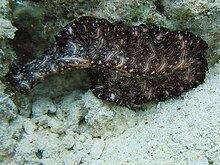
Pseudobiceros bedfordi, (Bedford's flatworm)
The other platyzoan phyla are mostly microscopic and pseudocoelomate. The most prominent are the Rotifera or rotifers, which are common in aqueous environments. They also include the Acanthocephala or spiny-headed worms, the Gnathostomulida, Micrognathozoa, and possibly the Cycliophora.[80] These groups share the presence of complex jaws, from which they are called the Gnathifera.
Lophotrochozoa
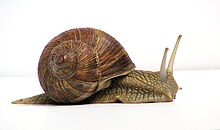
Roman snail, Helix pomatia
The Lophotrochozoa also include the Nemertea or ribbon worms, the Sipuncula, and several phyla that have a ring of ciliated tentacles around the mouth, called a lophophore.[85] These were traditionally grouped together as the lophophorates.[86] but it now appears that the lophophorate group may be paraphyletic,[87] with some closer to the nemerteans and some to the molluscs and annelids.[88][89] They include the Brachiopoda or lamp shells, which are prominent in the fossil record, the Entoprocta, the Phoronida, and possibly the Bryozoa or moss animals.[90]
Model organisms
Main articles: Model organism and Animal testing
Because of the great diversity found in animals, it is more
economical for scientists to study a small number of chosen species so
that connections can be drawn from their work and conclusions
extrapolated about how animals function in general. Because they are
easy to keep and breed, the fruit fly Drosophila melanogaster and the nematode Caenorhabditis elegans have long been the most intensively studied metazoan model organisms, and were among the first life-forms to be genetically sequenced. This was facilitated by the severely reduced state of their genomes, but as many genes, introns, and linkages
lost, these ecdysozoans can teach us little about the origins of
animals in general. The extent of this type of evolution within the
superphylum will be revealed by the crustacean, annelid, and molluscan genome projects currently in progress. Analysis of the starlet sea anemone genome has emphasised the importance of sponges, placozoans, and choanoflagellates, also being sequenced, in explaining the arrival of 1500 ancestral genes unique to the Eumetazoa.[91]An analysis of the homoscleromorph sponge Oscarella carmela also suggests that the last common ancestor of sponges and the eumetazoan animals was more complex than previously assumed.[92]
Other model organisms belonging to the animal kingdom include the house mouse (Mus musculus) and zebrafish (Danio rerio).
History of classification

Carl Linnaeus, known as the father of modern taxonomy
In 1874, Ernst Haeckel divided the animal kingdom into two subkingdoms: Metazoa (multicellular animals) and Protozoa (single-celled animals).[94] The protozoa were later moved to the kingdom Protista, leaving only the metazoa. Thus Metazoa is now considered a synonym of Animalia.[95]

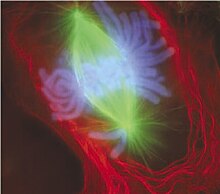
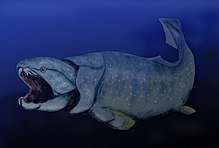

Post a Comment